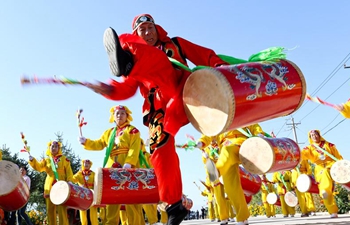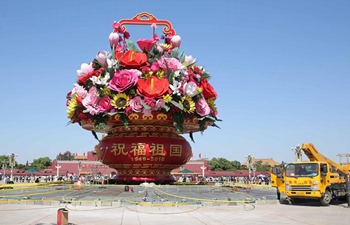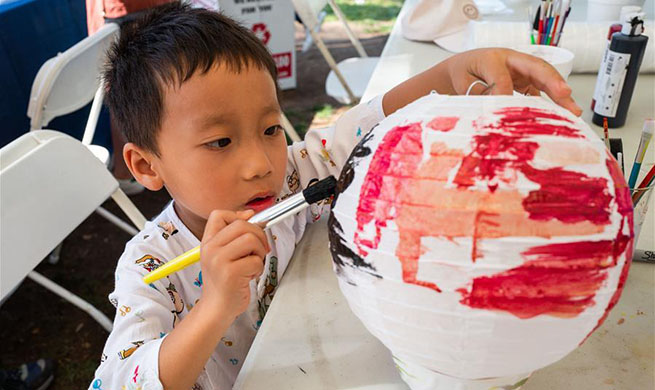CHANGSHA, Sept. 23 (Xinhua) -- As rural landscapes and cultures are changing even disappearing rapidly due to globalization and urbanization, China is looking to find a way out of the crisis.
Among the traditional Chinese villages that have gained a new life, Gaoyi village in central China's Hunan Province is developing rural tourism to create steady revenue and protect traditions.
The village preserved 104 ancient buildings, with the oldest ones dating back over 600 years. Most of the architectures are built with a combination of local ethnic minority style.
Yang Wuqiang, 51, who has been striving to preserve the village for almost 30 years, now is working harder than ever to manage tourism facilities and attract more youth back to the place where he grew up.
The once-sleeping village began to see a surge in development in 1997 when a team of cultural relics experts visited.
The villagers were "very excited," Yang recalled. Everyone believed that "new life was about to be brought into these old buildings."
After the visit, the ancient buildings of Gaoyi were successively listed as county, city and provincial level cultural relics protection units. The villagers were thrilled to know that the government was paying attention to preserve the buildings in their village.
However, the villagers' enthusiasm faded as time passed. "The villagers needed to build houses for their married children, but the style of the new houses does not match the old architecture," Yang said.
Several mismatched modern buildings were built, and Yang "felt painful but powerless."
The crisis of Gaoyi is not an isolated case. According to Hu Binbin, the director of the Research Center of Chinese Village Culture at Central South University, the main challenges of protection of traditional villages are excessive commercial development, outflow of labor, and its contradiction with residents' desire to improve living conditions.
For more than 30 years, Hu's team has visited more than 5,000 traditional Chinese villages and systematically studied these cultural carriers filled with rich historical information. They found that a traditional village disappears almost every two days.
Fortunately, while China has striven to revitalize the countryside, increasing attention has been given to the traditional villages in the past few years.
In China, the first national list of traditional villages was released in 2012. From then on, the effort to protect traditional villages has risen to national attention, Hu said.
After four surveys, more than 4,000 villages had been listed as national traditional villages by the end of 2016.
In 2012, the maintenance project of ancient buildings in Gaoyi started. In the following five years, 30 million yuan (about 4.4 million U.S. dollars) was invested in repairing 68 buildings in the village.
The improvement of infrastructure and the excavation of traditional culture are also carried out simultaneously in the village, which gives a boom to tourism development.
In 2017, the village received more than 250,000 tourists, with tourism income up to 300,000 yuan (about 44,000 U.S. dollars), accounting for 20 percent of the village's total income.
"The hearts of the villagers have been lit up again, and the awareness of protection has been greatly enhanced," Yang said.
Now, when the villagers initiate to change their kitchens or toilets, they will submit a report and invite professional staff to guide them.
Gaoyi has also started constructing a new village in a parcel of cleared ground to alleviate the pressure on land use.
More and more young people returned to the village. Huang Xinliang is one of them. "I want more people to know our village."
He not only promotes his family hotel through live broadcasts but also introduces the historical stories and local products of his hometown on the internet.
"The ancient village is still quiet but sees more vitality. Now the village is clean and tidy, and the cultural activities are greatly enriched. The villagers are ready to welcome more tourists," said Yang.

















